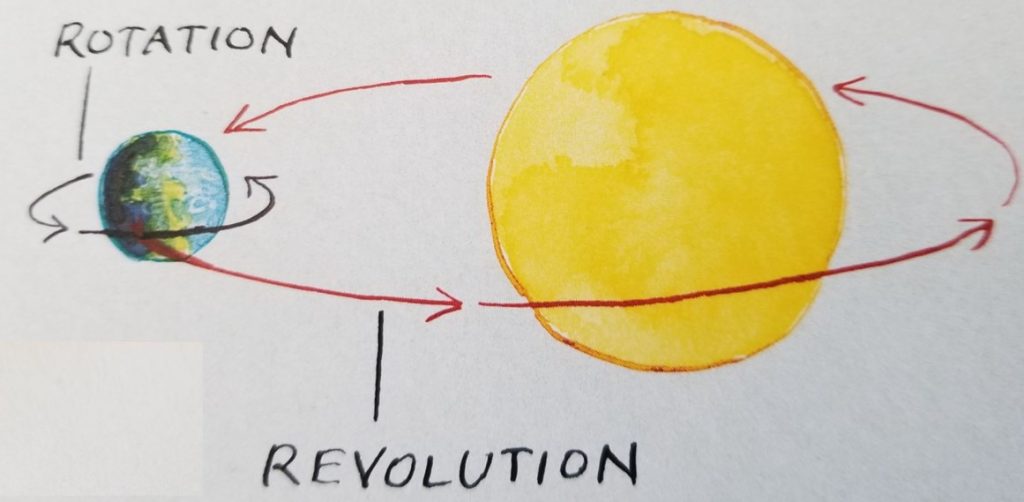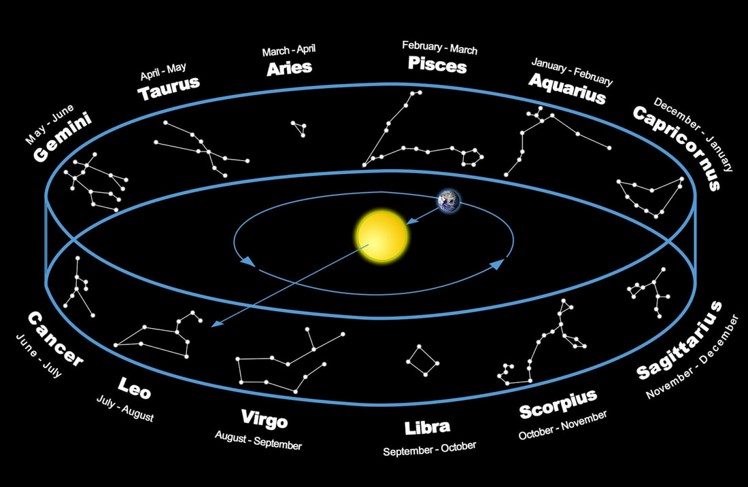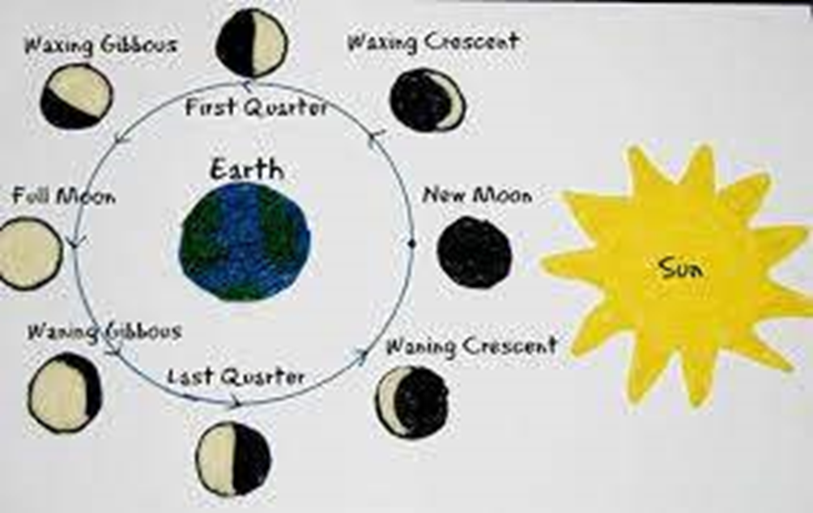37 Organizing with Astronomy and its Natural Time Units
- If you were living 10,000 years ago, what astronomical and land-based events would you notice and pay attention to?
- How would making sense of these events enable you to organize your life with “natural” time units?
- What evidence do we have today of these ancient efforts of organizing?
Sunrise, Sunset, Sunrise = ONE DAY
We observe that the sun rises in the east, moves across the sky, and then sets in the west. After about the same amount of time passes, it rises again. It seems there is a regular cycle for the sun to be moving around the earth. We call this cycle a DAY.
But the perception that the sun moves around the earth is an illusion caused by the earth rotating on its axis once a day. Instead of the sun revolving around the earth, the earth revolves around the sun. The path the earth takes around the sun is called its ORBIT.

The Sun’s Cycle Through the Stars = ONE YEAR
As the earth revolves around the sun, the sun seems to move against the background of stars This is another illusion, and because every 365 days the sun returns to the same place in the star background, this creates another natural of time that we call a YEAR. The stars that are “behind the sun” as it seems to move are organized into twelve constellations that we call the ZODIAC.
When someone asks you “what is your sign?” they are saying “where was the sun located against the star background on your birthday?”

The Moon’s Cycle = ONE MONTH
Like the sun, the moon rises and sets on a regular cycle, but each day it moves “backwards” a little and rises earlier and sets later each day. These observations make people believe that the moon moves around the earth.
Because the moon REVOLVES around the EARTH, we can only see the part of the moon that the SUN is shining on. So as the moon moves backwards it also changes its shape from a narrow crescent to a full circle and then back again to a narrow crescent. This cycle of the phases takes about 29 days. We call this cycle a MONTH (“moon-th”).


